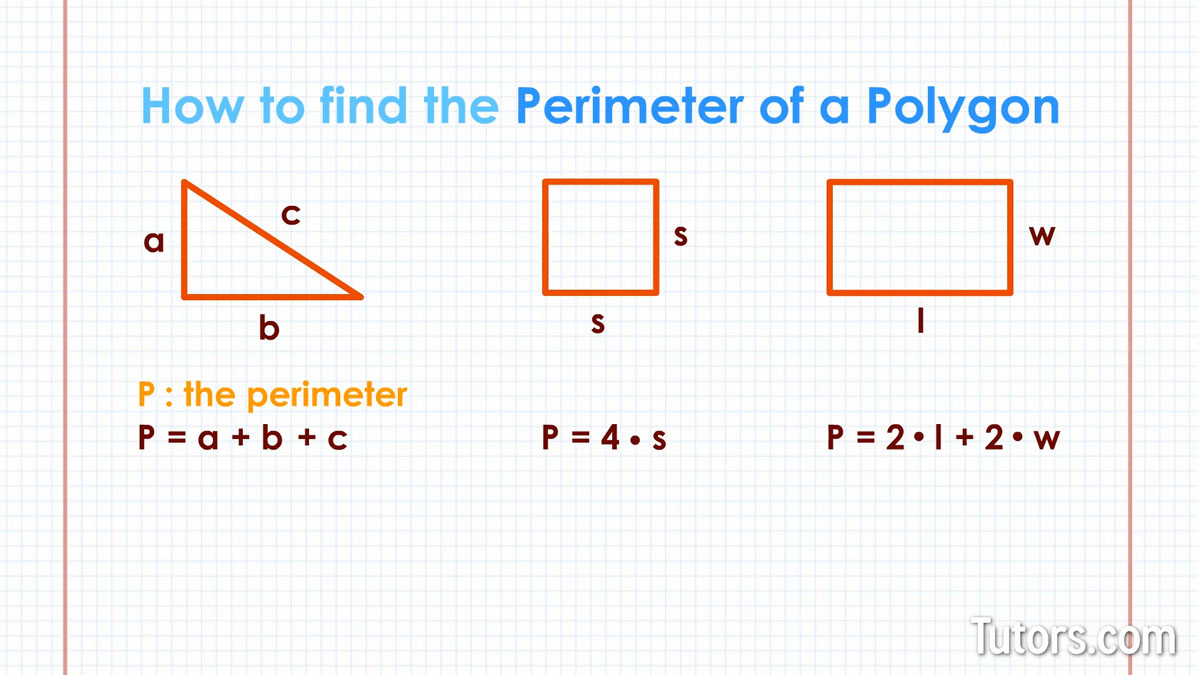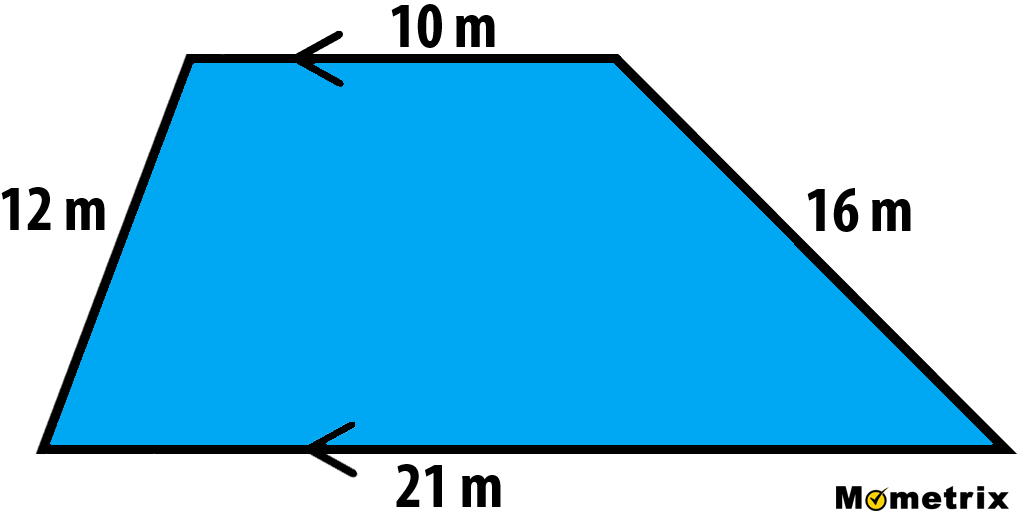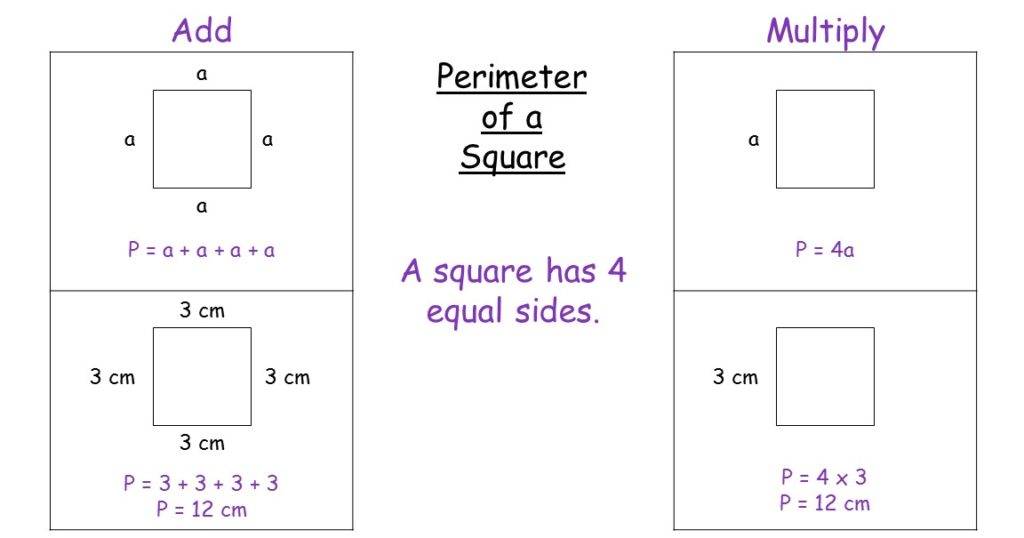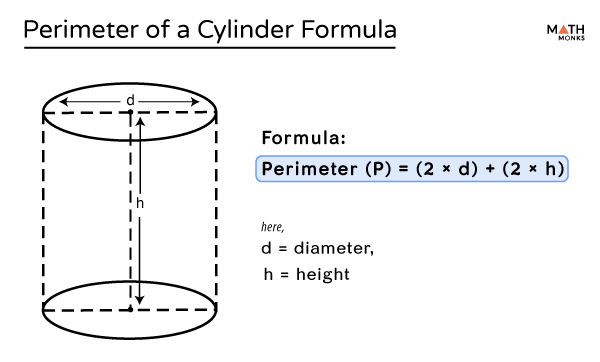Topic what is the perimeter of parallelogram: Understanding what the perimeter of a parallelogram is can enhance your geometry skills and practical knowledge. This article provides a detailed explanation of the perimeter formula, step-by-step calculation methods, and real-life applications. Whether you're a student or a math enthusiast, you'll find this guide both informative and engaging.
Table of Content
- Understanding the Perimeter of a Parallelogram
- Introduction to Parallelograms
- Definition and Properties of a Parallelogram
- Understanding the Perimeter
- Formula for Calculating the Perimeter
- Examples and Practice Problems
- Applications of Parallelogram Perimeter in Real Life
- Common Mistakes and How to Avoid Them
- Frequently Asked Questions (FAQs)
- Conclusion and Summary
- YOUTUBE: Hướng dẫn chi tiết cách tính chu vi của hình bình hành. Video này sẽ giúp bạn hiểu rõ hơn về hình học và áp dụng công thức vào thực tế.
Understanding the Perimeter of a Parallelogram
A parallelogram is a four-sided figure with opposite sides that are equal in length and parallel to each other. Calculating the perimeter of a parallelogram involves summing the lengths of all four sides.
Formula for the Perimeter
The formula to find the perimeter \( P \) of a parallelogram is given by:
\[ P = 2(a + b) \]
where \( a \) and \( b \) are the lengths of the adjacent sides of the parallelogram.
Steps to Calculate the Perimeter
- Identify the lengths of the two adjacent sides of the parallelogram. Let these lengths be \( a \) and \( b \).
- Use the formula \( P = 2(a + b) \) to calculate the perimeter.
- Sum the lengths of the adjacent sides and multiply by 2.
Example Calculation
Consider a parallelogram with sides of lengths 5 cm and 8 cm. To find the perimeter:
- Let \( a = 5 \, \text{cm} \) and \( b = 8 \, \text{cm} \).
- Using the formula: \( P = 2(a + b) \)
- Calculate: \( P = 2(5 + 8) = 2 \times 13 = 26 \, \text{cm} \)
Therefore, the perimeter of the parallelogram is 26 cm.
Additional Notes
Remember that the parallelogram's opposite sides are equal, which simplifies the calculation. If you only know one pair of opposite sides, you can use that information, as the other pair will have the same lengths.

READ MORE:
Introduction to Parallelograms
A parallelogram is a special type of quadrilateral with opposite sides that are both parallel and equal in length. This geometric shape is widely studied in mathematics due to its unique properties and applications. Here are some key characteristics and definitions to understand parallelograms better:
- Opposite Sides: In a parallelogram, opposite sides are equal and parallel. If one side is denoted as \( a \) and the adjacent side as \( b \), then the other two sides are also \( a \) and \( b \).
- Opposite Angles: Opposite angles in a parallelogram are equal. If one angle is \( \theta \), the opposite angle is also \( \theta \).
- Adjacent Angles: Adjacent angles in a parallelogram are supplementary, meaning they add up to \( 180^\circ \).
- Diagonals: The diagonals of a parallelogram bisect each other. This means each diagonal cuts the other into two equal parts.
Parallelograms come in various forms, including rhombuses, rectangles, and squares, which are all special types of parallelograms with additional properties:
- Rectangle: A parallelogram with four right angles.
- Rhombus: A parallelogram with all sides of equal length.
- Square: A parallelogram that is both a rectangle and a rhombus, with equal sides and right angles.
Understanding these basic properties helps in recognizing and working with parallelograms in various mathematical problems and real-life applications.
Definition and Properties of a Parallelogram
A parallelogram is a quadrilateral where each pair of opposite sides is parallel and equal in length. This definition gives rise to several unique properties that distinguish parallelograms from other geometric shapes. Here are the key properties of a parallelogram:
- Opposite Sides Are Equal and Parallel: If a parallelogram has sides \( AB \), \( BC \), \( CD \), and \( DA \), then \( AB \parallel CD \) and \( AB = CD \); \( BC \parallel DA \) and \( BC = DA \).
- Opposite Angles Are Equal: The opposite angles of a parallelogram are equal. If one angle is \( \theta \), the angle directly opposite to it is also \( \theta \).
- Adjacent Angles Are Supplementary: Adjacent angles in a parallelogram add up to \( 180^\circ \). If one angle is \( \alpha \), the adjacent angle is \( 180^\circ - \alpha \).
- Diagonals Bisect Each Other: The diagonals of a parallelogram bisect each other, meaning they intersect at their midpoints. If diagonals \( AC \) and \( BD \) intersect at point \( E \), then \( AE = EC \) and \( BE = ED \).
- Area Formula: The area \( A \) of a parallelogram can be calculated using the base \( b \) and height \( h \) with the formula: \[ A = b \times h \]
These properties make parallelograms a fundamental topic in geometry, with applications in various fields such as engineering, architecture, and computer graphics. By understanding these properties, one can solve complex geometrical problems and appreciate the symmetry and balance inherent in parallelograms.
Understanding the Perimeter
The perimeter of a parallelogram is the total distance around the outside of the shape. To calculate the perimeter, you need to know the lengths of its sides. In a parallelogram, opposite sides are equal in length, which simplifies the calculation. Here’s a step-by-step approach to understanding and calculating the perimeter:
- Identify the Side Lengths:
Determine the lengths of the two adjacent sides of the parallelogram. Let's denote these lengths as \( a \) and \( b \).
- Use the Perimeter Formula:
The formula to calculate the perimeter \( P \) of a parallelogram is:
\[
P = 2(a + b)
\]
This formula is derived from the fact that a parallelogram has two pairs of equal sides. - Calculate the Perimeter:
Substitute the known values of \( a \) and \( b \) into the formula and perform the arithmetic operations:
- First, add the lengths of the adjacent sides: \( a + b \).
- Then, multiply the sum by 2 to get the perimeter: \( 2(a + b) \).
For example, if a parallelogram has side lengths of 5 cm and 8 cm, the perimeter can be calculated as follows:
- Identify the side lengths: \( a = 5 \, \text{cm} \) and \( b = 8 \, \text{cm} \).
- Apply the formula: \( P = 2(a + b) = 2(5 + 8) = 2 \times 13 = 26 \, \text{cm} \).
Thus, the perimeter of the parallelogram is 26 cm. This straightforward method allows for quick and accurate determination of the perimeter, which is essential for various practical applications in fields such as construction, design, and mathematics.
Formula for Calculating the Perimeter
Calculating the perimeter of a parallelogram involves using a straightforward formula based on the lengths of its sides. Here’s a detailed explanation and step-by-step guide to understanding and applying this formula:
- Identify the Side Lengths:
First, determine the lengths of the two adjacent sides of the parallelogram. These sides are typically denoted as \( a \) and \( b \).
- Understand the Perimeter Formula:
The formula to calculate the perimeter \( P \) of a parallelogram is:
\[
P = 2(a + b)
\]
This formula works because a parallelogram has two pairs of opposite sides that are equal in length. - Apply the Formula:
To find the perimeter, simply substitute the known values of the side lengths into the formula. Here’s the step-by-step process:
- Add the lengths of the adjacent sides: \( a + b \).
- Multiply the sum by 2 to account for both pairs of sides: \( 2(a + b) \).
For instance, consider a parallelogram with side lengths of 7 cm and 10 cm. To calculate its perimeter:
- Identify the side lengths: \( a = 7 \, \text{cm} \) and \( b = 10 \, \text{cm} \).
- Apply the formula: \[ P = 2(a + b) = 2(7 + 10) = 2 \times 17 = 34 \, \text{cm} \]
Therefore, the perimeter of the parallelogram is 34 cm. Using this formula, you can quickly and accurately determine the perimeter of any parallelogram, which is useful in various mathematical and real-world applications.

Examples and Practice Problems
To reinforce your understanding of calculating the perimeter of a parallelogram, let’s look at some examples and practice problems. Follow each step carefully to ensure accurate results.
Example 1
Calculate the perimeter of a parallelogram with side lengths 7 cm and 10 cm.
- Identify the side lengths: \( a = 7 \, \text{cm} \) and \( b = 10 \, \text{cm} \).
- Use the formula: \[ P = 2(a + b) \]
- Substitute the values: \[ P = 2(7 + 10) = 2 \times 17 = 34 \, \text{cm} \]
- Therefore, the perimeter of the parallelogram is 34 cm.
Example 2
Find the perimeter of a parallelogram with adjacent side lengths of 5 inches and 12 inches.
- Identify the side lengths: \( a = 5 \, \text{in} \) and \( b = 12 \, \text{in} \).
- Apply the formula: \[ P = 2(a + b) \]
- Substitute the values: \[ P = 2(5 + 12) = 2 \times 17 = 34 \, \text{in} \]
- Thus, the perimeter of the parallelogram is 34 inches.
Practice Problems
- Calculate the perimeter of a parallelogram with side lengths 9 m and 14 m.
- Find the perimeter of a parallelogram where the adjacent sides are 6 cm and 15 cm long.
- Determine the perimeter of a parallelogram with side lengths 8 inches and 11 inches.
Solutions
- Problem 1: \[ P = 2(9 + 14) = 2 \times 23 = 46 \, \text{m} \]
- Problem 2: \[ P = 2(6 + 15) = 2 \times 21 = 42 \, \text{cm} \]
- Problem 3: \[ P = 2(8 + 11) = 2 \times 19 = 38 \, \text{in} \]
Practicing these problems helps solidify your understanding and ensures you can accurately calculate the perimeter of any parallelogram.
Applications of Parallelogram Perimeter in Real Life
The perimeter of a parallelogram has various practical applications in real life. Understanding how to calculate and utilize this measurement can be beneficial in numerous fields. Here are some real-life applications of parallelogram perimeter:
- Construction and Architecture:
In construction and architectural design, accurate measurements are crucial. Calculating the perimeter of parallelogram-shaped elements, such as floor tiles, windows, or structural components, helps in determining the required materials and ensuring precise fitting.
- Landscaping and Gardening:
For landscaping projects, including designing garden layouts or pathways, knowing the perimeter of parallelogram areas can assist in planning borders, fencing, and planting arrangements. This ensures an efficient use of space and materials.
- Textile and Fashion Industry:
In the textile industry, fabric pieces are often cut into various geometric shapes, including parallelograms. Calculating the perimeter is essential for pattern making, seam allowances, and ensuring that fabric pieces fit together correctly in the final product.
- Engineering and Manufacturing:
Engineers and manufacturers frequently deal with parallelogram-shaped components. Understanding the perimeter helps in designing and fabricating parts that need to fit together seamlessly in machinery, vehicles, or electronic devices.
- Art and Design:
Artists and designers use geometric shapes, including parallelograms, in their work. Knowing the perimeter allows for precise calculations when creating frames, borders, or patterns, contributing to the overall aesthetics and functionality of their designs.
- Home Improvement Projects:
For DIY home improvement projects, such as laying new flooring, creating custom shelving, or building furniture, calculating the perimeter of parallelogram-shaped surfaces ensures accurate material measurements and a professional finish.
These applications demonstrate the importance of understanding and calculating the perimeter of parallelograms. This knowledge is not only useful in academic settings but also in various professional and everyday contexts.
Common Mistakes and How to Avoid Them
When calculating the perimeter of a parallelogram, there are several common mistakes that students and even professionals might make. Below are these mistakes and ways to avoid them:
-
Incorrect Formula Usage:
One of the most common mistakes is using the wrong formula. The correct formula for the perimeter of a parallelogram is:
P = 2(a + b)
where a and b are the lengths of adjacent sides.
How to Avoid: Always double-check which formula you are using. Remember, the perimeter is the sum of all sides, so the formula for a parallelogram is essentially twice the sum of its adjacent sides.
-
Misidentifying the Sides:
Sometimes, the sides of the parallelogram are not correctly identified, especially if the figure is not properly labeled or is rotated.
How to Avoid: Ensure that you correctly identify the lengths of the adjacent sides. Label the sides if necessary to avoid confusion.
-
Incorrect Measurements:
Using incorrect or approximated measurements can lead to errors in calculating the perimeter.
How to Avoid: Always use precise measurements and recheck them before performing the calculation. If working from a diagram, use a ruler or a scale to ensure accuracy.
-
Forgetting Units:
Omitting units or using inconsistent units can lead to incorrect answers.
How to Avoid: Always include units in your calculations and ensure that all measurements are in the same unit system before performing the calculation.
-
Misinterpretation of Angles:
When using the formula involving angles, misinterpreting the angles can result in errors.
P = 2a + 2h / \sin(\theta)
where h is the height and \(\theta\) is the angle.
How to Avoid: Ensure that you understand the relationship between the sides and angles. Use a protractor to measure angles accurately if necessary.
By being aware of these common mistakes and following the suggested steps to avoid them, you can accurately calculate the perimeter of any parallelogram.
Frequently Asked Questions (FAQs)
Below are some frequently asked questions about the perimeter of a parallelogram along with their detailed answers.
-
What is the formula for the perimeter of a parallelogram?
The formula for the perimeter of a parallelogram is \( P = 2(a + b) \), where \( a \) and \( b \) are the lengths of the adjacent sides.
-
How do you calculate the perimeter if only the sides are known?
Simply add the lengths of the adjacent sides and multiply by 2. For example, if the sides are 5 cm and 8 cm, the perimeter is \( 2(5 + 8) = 26 \) cm.
-
Can you find the perimeter of a parallelogram if only the diagonals are given?
No, knowing just the diagonals is not enough to determine the perimeter. You need to know the lengths of at least one pair of adjacent sides.
-
What is the difference between a parallelogram and a rectangle?
A parallelogram is a quadrilateral with two pairs of parallel sides, whereas a rectangle is a type of parallelogram with four right angles.
-
Can a parallelogram have right angles?
Yes, a parallelogram can have right angles. When it does, it is specifically called a rectangle.
-
Why is it important for the opposite sides and angles to be equal in a parallelogram?
This equality is what defines a parallelogram and distinguishes it from other quadrilaterals. It ensures that the shape maintains its geometric properties.
-
How do you apply the properties of parallelograms in real life?
Parallelograms are used in various fields such as architecture and engineering. For instance, they help in designing mechanical linkages and structures that require parallel motion.
-
What is the relation between the area and perimeter of a parallelogram?
The area of a parallelogram is calculated as \( \text{Area} = \text{base} \times \text{height} \), while the perimeter is calculated as \( P = 2(a + b) \). Both are fundamental properties but describe different aspects of the shape.
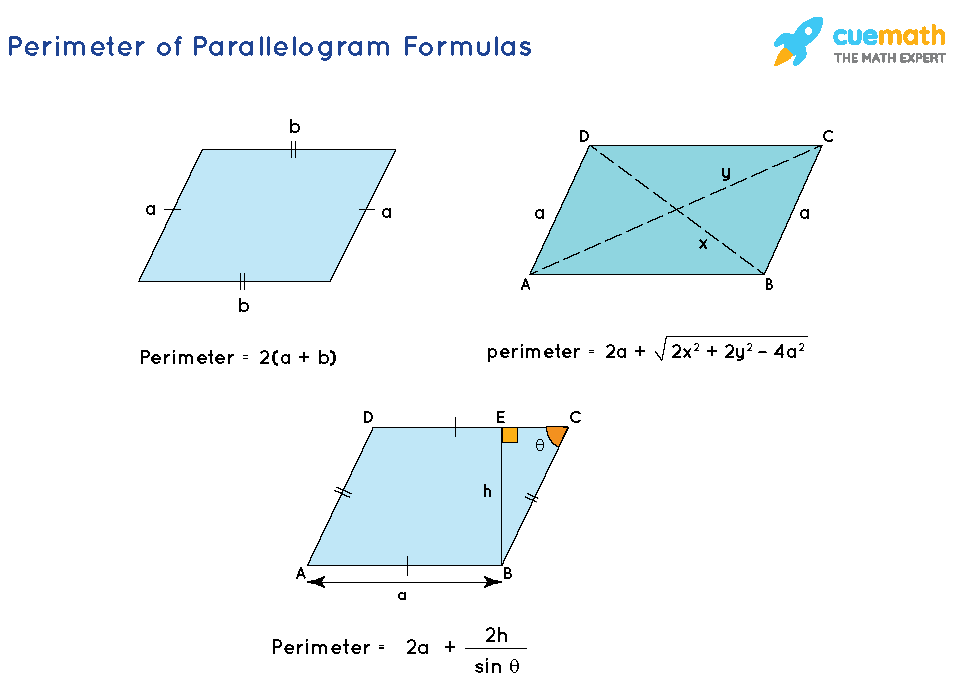
Conclusion and Summary
Understanding the perimeter of a parallelogram is fundamental in geometry. The perimeter is the total distance around the parallelogram, and it is calculated using the formula:
$$\text{Perimeter} = 2(a + b)$$
where \(a\) and \(b\) are the lengths of the adjacent sides of the parallelogram.
Throughout this guide, we have explored various aspects of the parallelogram, from its definition and properties to practical applications of its perimeter. Key points include:
- Definition and Properties: A parallelogram is a quadrilateral with opposite sides that are equal and parallel. Its opposite angles are also equal, and its diagonals bisect each other.
- Perimeter Calculation: The formula for the perimeter is straightforward and involves simply summing the lengths of the adjacent sides and multiplying by two.
- Common Mistakes: These include confusing the perimeter with the area, incorrectly identifying side lengths, and misunderstanding the properties of the parallelogram.
- Real-Life Applications: Calculating the perimeter is useful in various fields, including engineering, architecture, and design, where precise measurements are crucial.
By mastering the perimeter calculation and understanding the properties of parallelograms, one can avoid common mistakes and apply this knowledge effectively in both academic and practical scenarios. Practice with various problems and examples to reinforce these concepts and ensure a strong grasp of the material.
In summary, the study of parallelograms and their perimeters provides a foundation for further exploration in geometry and its applications. Remember to always double-check calculations and understand the underlying properties to achieve accurate results.
Hướng dẫn chi tiết cách tính chu vi của hình bình hành. Video này sẽ giúp bạn hiểu rõ hơn về hình học và áp dụng công thức vào thực tế.
Cách Tìm Chu Vi Hình Bình Hành
READ MORE:
Hướng dẫn cách tính chu vi hình bình hành một cách dễ hiểu và chi tiết.
Cách Tính Chu Vi Hình Bình Hành
